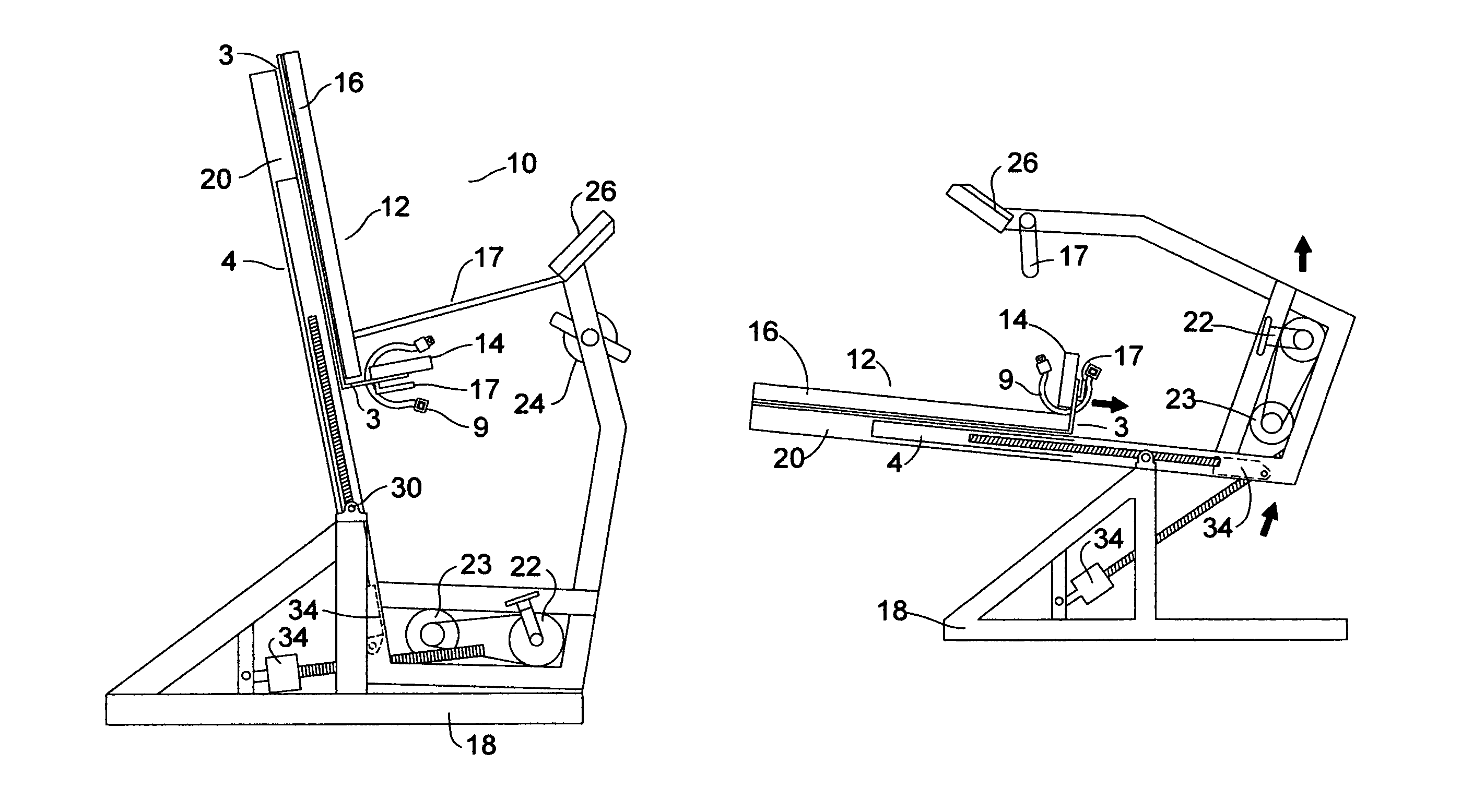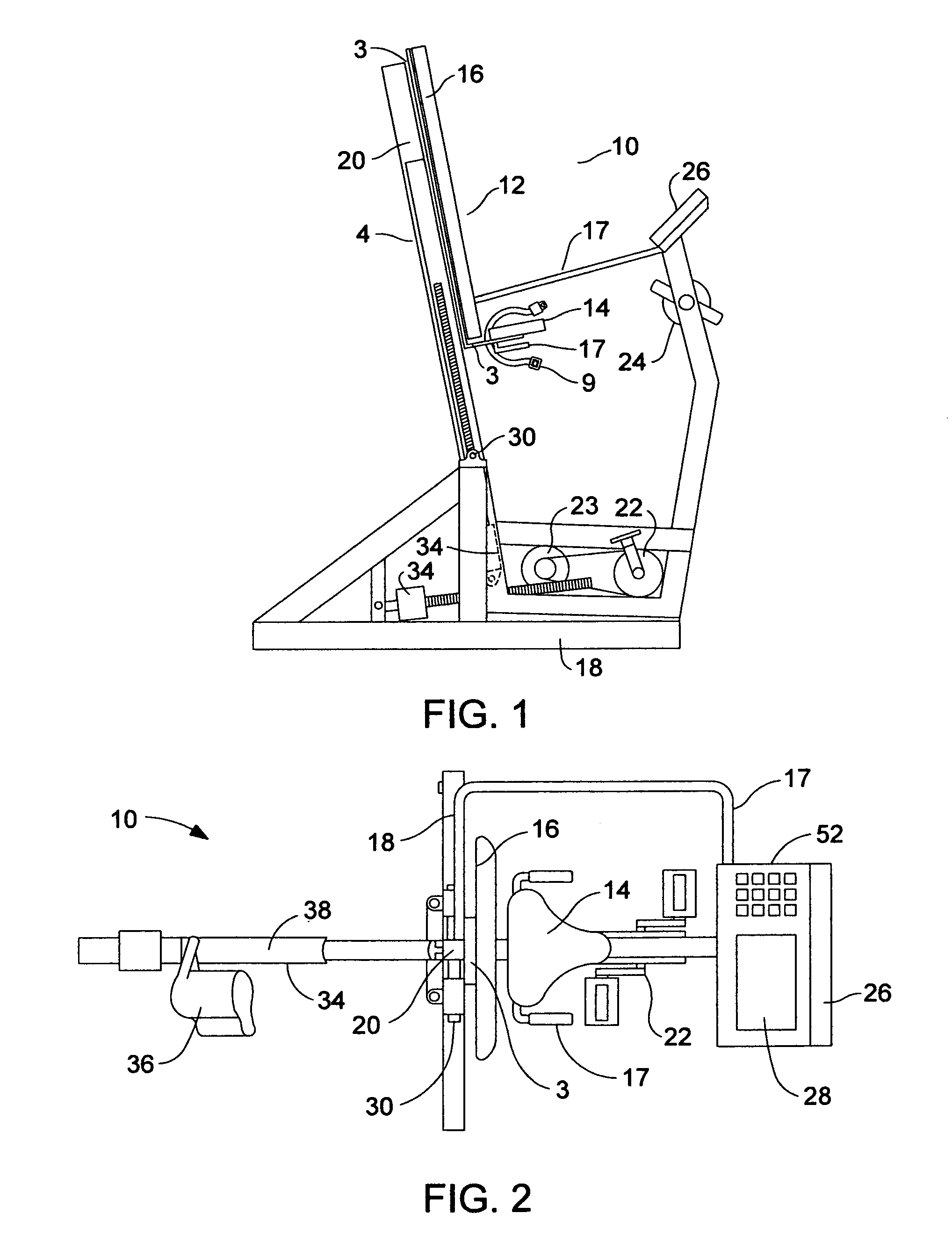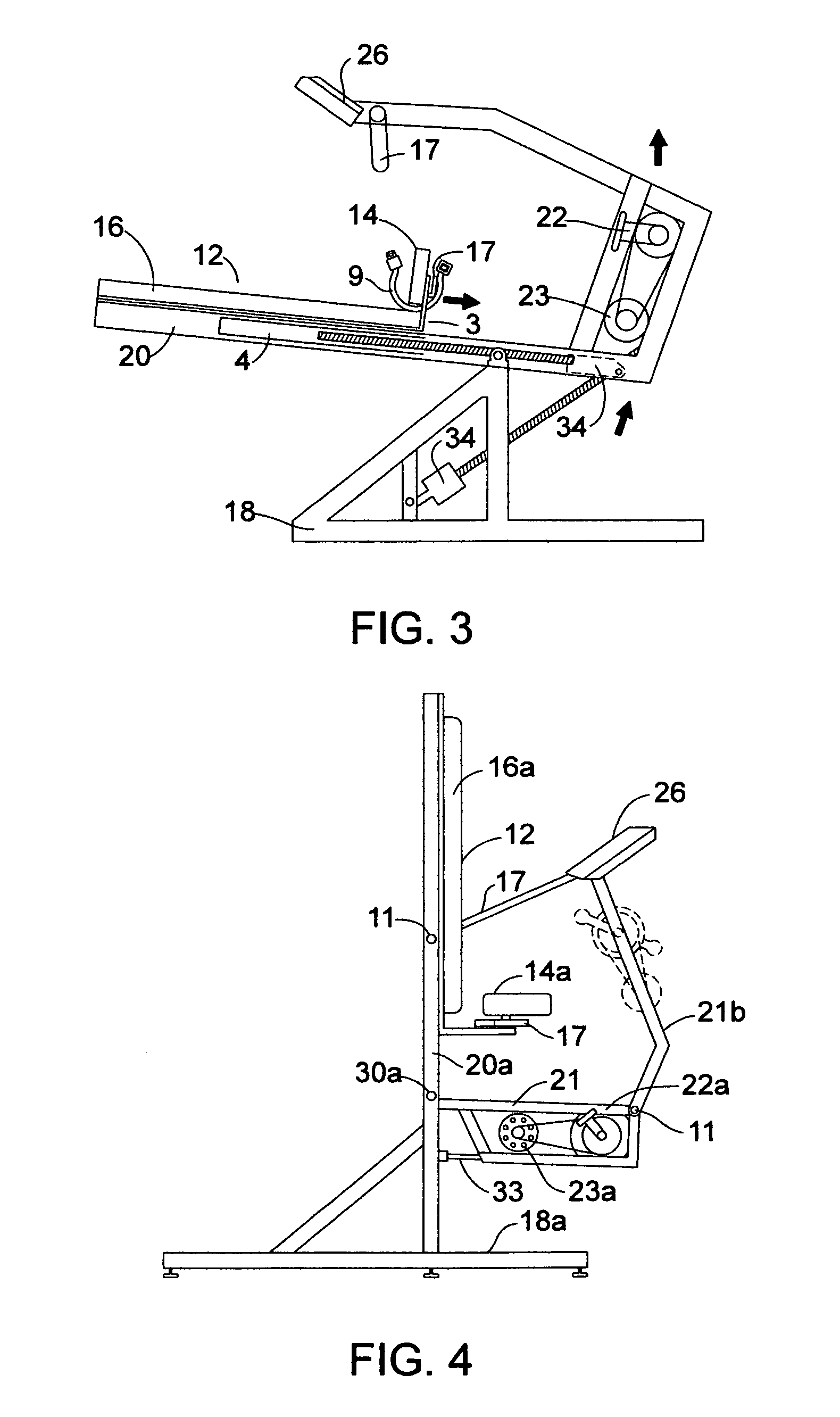Exercise device
a technology of exercise device and user support system, which is applied in the direction of cardiovascular exercise device, gymnastic exercise, sport apparatus, etc., can solve the problems of device not providing resistance, device not contemplating or including a controlled program, and seat limitation
- Summary
- Abstract
- Description
- Claims
- Application Information
AI Technical Summary
Benefits of technology
Problems solved by technology
Method used
Image
Examples
Embodiment Construction
[0036]FIGS. 1-3 schematically illustrate an exercise device generally at 10 which include a support surface 12 which includes a seat 14 and a back rest 16. A seat strap 9 and a pair of hand grips 17 may also be provided below the seat 14 to provide the user with additional support. The support surface 12 which is carried on main frame 18 which supports the surface above a floor. The back rest 16 could be a foam covered board or could be a contoured back rest, as desired. The seat 14 could be formed integrally with the back rest 16 or it could be formed separately. The hand grips 17 may also be secured to form integrally with the frame 18 and or sub-frame 20 and may wrap around to be directed in a direction that a user would face when seated on the seat 14. Depending from the support surface 12 (back rest 16 and seat 14) a support surface frame 3 may be connected with sub-frame 20 which carries on it a device 22 for providing resistance to the legs of a user. Alternatively, or in com...
PUM
 Login to View More
Login to View More Abstract
Description
Claims
Application Information
 Login to View More
Login to View More - R&D
- Intellectual Property
- Life Sciences
- Materials
- Tech Scout
- Unparalleled Data Quality
- Higher Quality Content
- 60% Fewer Hallucinations
Browse by: Latest US Patents, China's latest patents, Technical Efficacy Thesaurus, Application Domain, Technology Topic, Popular Technical Reports.
© 2025 PatSnap. All rights reserved.Legal|Privacy policy|Modern Slavery Act Transparency Statement|Sitemap|About US| Contact US: help@patsnap.com



